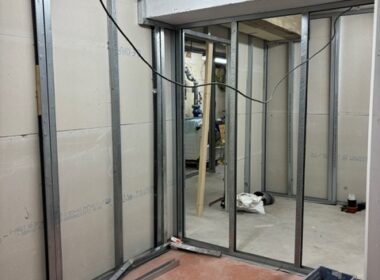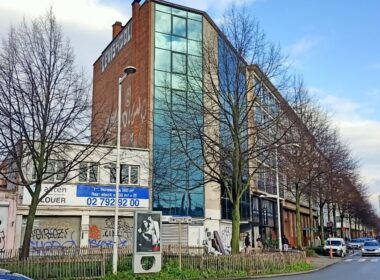“We won’t be able to solve health problems if we don’t take the most vulnerable people into account”
— Charlotte Marchandise-Fourquet (international public health expert)
The possibilities for, and arguments in favour of, healthy urban development, based on the relationship between outdoor play for children and urban planning are many.
OPEN SPACE AS A DECISIVE HEALTH FACTOR
The importance of playing for the health and well-being of children is an established fact[i]: the right of children to engage in play is included in international conventions for this reason[ii]. The availability of outdoor play areas and infrastructure providing many choices is therefore essential[iii]. They also contribute to the creation of strong links between communities, generations and society in general.
However, children’s access to play areas is declining[iv]. Given Brussels’ demographic growth, and the high proportion of younger people in this growth, the need for an urban policy focused on children is becoming necessary. It implies rebalancing infrastructure investments and the adoption of new urban planning and design practices. This credo involves several challenges: the sustainable city, thought out for future generations, and providing solutions for a healthy planet…
THE CITY, A STIMULATING ENVIRONMENT FOR CHILDREN
The urban environment forms our abilities, habits and standards. It provides common ground and an entry point where children become aware of risks, but also become citizens concerned about the environment, who will be able to take informed decisions and call for political change via participation and accountability[v].
Planning urban ecology and urban childhoods together aims to provide a healthy and safe environment which stimulates the learning of sustainable behaviours. Recreational urban design can contribute to bringing children together around ecological values and practices.
NEW URBAN PLANNING OPPORTUNITIES FOR BRUSSELS
Over the past years, urban development strategies have been increasingly taking the quality of life of the most vulnerable residents into consideration. A profound change has begun in the design of public spaces and the organisation of mobility. It is visible in the greater attention paid to uses, the potential for diversification of activities and the inclusion of different age categories, including children[vi].
The trend can be further strengthened by a collective awareness of the importance of this dimension. Many spaces in the Region are currently undergoing change. They can all include this component: the redefinition of residential roadways (zone 30)[vii], the rehabilitation of major groups[viii], the reconfiguration of university campuses and hospitals, the diversification of uses in urban business zones[ix]… Opportunities also extend to private land, where planning for the surrounding areas[x] can include this dimension in a number of ways. The awareness of designers and the accountability of contracting authorities can also contribute to the redefinition of the spaces dedicated to play in all areas of the city.
Political decisions about health, education, mobility and planning are intimately linked. in the urban context. This underscores the need for cross-disciplinary work[xi] which supports consistent goals: “Building and designing our city for children is like sketching the blueprint of our future[xii].”
REFERENCES
[i] Tremblay, M.S., et al., Position Statement on Active Outdoor Play. Int J Environ Res Public Health, 2015. 12(6): p. 6475-505
[ii] United Nations General Assembly, Convention on the Rights of the Child, in Treaty Series, United Nations, Editor. 20 November 1989
[iii] Wyver S., The Influence of Outdoor Play on Social and Cognitive Development, in Tremblay RE, Boivin M, Peters RDeV. 2019
[iv] Real Play coalition, Value of Play Report. 2018
[v] Aerts, J., Shaping urbanization for children: A handbook on child-responsive urban planning. 2018, New-York: UNICEF
[vi] Street for Kids https://globaldesigningcities.org/streets-for-kids/
[vii] Leefstraten in Gent | Stad Gent
[viii] Toronto growing up guidelines
[x] Boechout – Vlaamse Overheid / Agentschap Wonen-Vlaanderen (thuisindetoekomst.be)
[xi] Audrey, S. and H. Batista-Ferrer, Healthy urban environments for children and young people: A systematic review of intervention studies. Health Place, 2015 Nov. 36:97: p. 117.
[xii] Erion Veljaj, Mayor of Tirana https://www.espacioparalainfancia.online/2020/returning-the-city-to-children
Auteurs: J.Aerts, S.Hermand, D.Luna Quintanilla, H.Rillaerts – BUUR part of SWECO
Illustratie: ©BUUR, Un nouveau quartier sur l’ancien site BMT, Boechout





